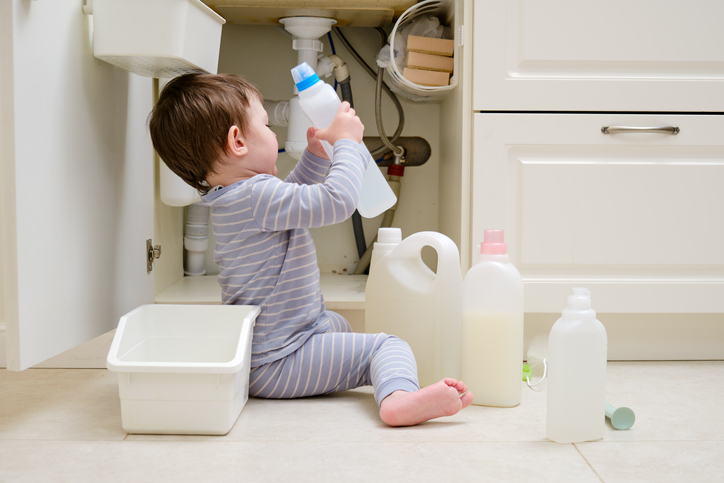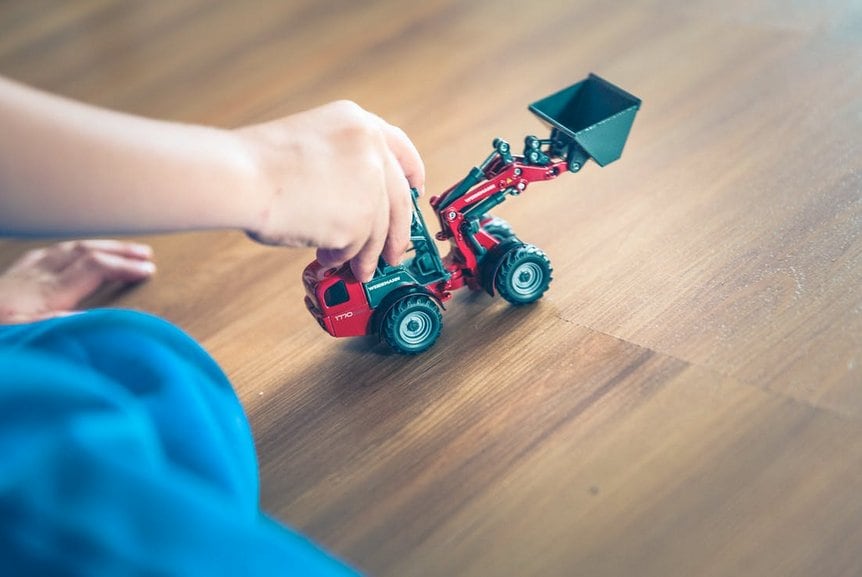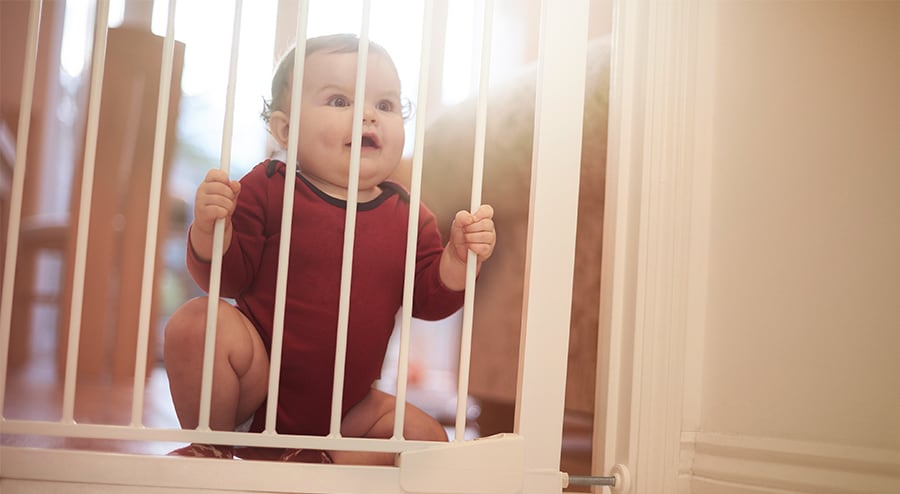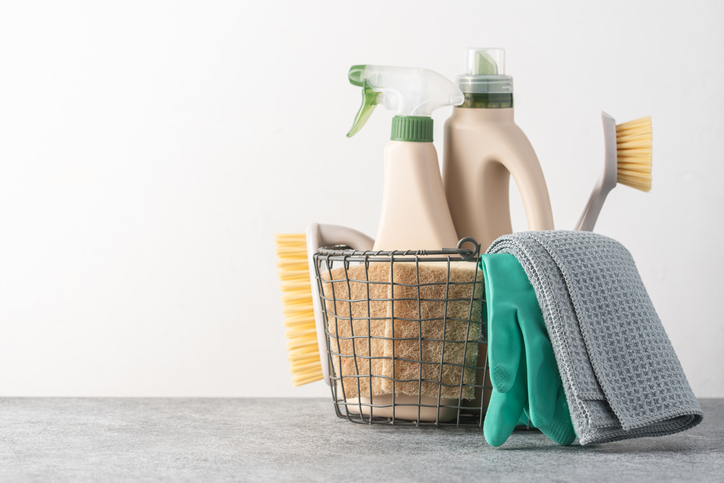Household chemicals are a common part of everyday life, used for various purposes such as cleaning, gardening, and maintenance. While these products make our lives easier, they also present potential dangers, especially when not handled with care. The safety of our loved ones, especially children and pets, is paramount, and understanding the importance of proper household chemical safety is crucial in preventing accidents and poisoning incidents.

Accidental poisoning incidents occur more frequently than one might expect. Each year, thousands of individuals, particularly young children, suffer from accidental exposure to household chemicals. The consequences can range from mild discomfort to severe health issues, highlighting the urgent need for vigilance in chemical storage and handling. Being aware of common poisoning risks and taking preventive measures, significantly reduces the likelihood of such incidents occurring in our homes.
Understanding the Risks
In our everyday lives, we encounter numerous household chemicals that can pose a significant threat if not handled with caution. Cleaning agents like bleach and disinfectants are commonly found in homes and can cause severe harm if ingested or if fumes are inhaled. Pesticides, commonly used for gardening and pest control, contain toxic substances that can be harmful if accidentally ingested or come into contact with the skin. Automotive products, such as antifreeze and motor oil, contain chemicals like ethylene glycol and petroleum distillates, which are hazardous if consumed. Even medications, when taken inappropriately, can lead to poisoning incidents. Brands like Clorox, Lysol, Raid, and Tide are well-known for producing cleaning and pesticide products that are widely used in households.
Potential Long-Term Effects of Accidental Chemical Exposure
Accidental exposure to household chemicals can have both immediate and long-term effects on our health. While mild cases may result in temporary discomfort, more severe exposures can lead to chronic health issues. For instance, repeated exposure to certain cleaning agents and pesticides can cause respiratory problems, skin irritations, and even neurological disorders. Some chemicals, like lead and mercury, can accumulate in the body over time, leading to severe poisoning symptoms, affecting vital organs like the brain, kidneys, and liver. Children and pets are particularly vulnerable to the long-term effects of chemical exposure due to their smaller size and developing immune systems. Understanding the potential risks and effects of household chemicals can motivate us to take proactive steps in preventing accidental poisoning and ensuring the safety of our families.
Implementing proper safety measures, such as childproofing, responsible chemical disposal, and utilizing non-toxic alternatives, is crucial in preventing accidental poisoning and safeguarding the well-being of our families.
Safeguarding Your Home
It is important that parents are educated on childproofing and securing cabinets, using childproof locks and safety gadgets, proper storage practices, and the importance of labeling and organizing household chemicals to ensure the safety of their children.
Childproofing and Securing Cabinets and Storage Areas
Childproofing your home is a crucial step in preventing accidental poisoning incidents involving household chemicals. Begin by identifying all areas where chemicals are stored, such as kitchen cabinets, laundry rooms, and garages. Install childproof locks on cabinets and drawers containing hazardous substances. Brands like Safety 1st and Dreambaby offer reliable childproofing products designed to keep young children from accessing dangerous chemicals. Additionally, consider using safety straps for heavy or tall furniture that could potentially tip over if a child tries to reach for chemicals placed at higher levels.
Utilizing Childproof Locks and Safety Gadgets
Childproof locks are invaluable tools in keeping household chemicals out of reach from curious little hands. These locks are easy to install and come in various styles to suit different cabinet designs. Magnetic locks, adhesive locks, and sliding locks are some popular options available from brands like Munchkin and Adoric. In addition to childproof locks, consider utilizing door knob covers to prevent children from wandering into areas where chemicals might be stored. These gadgets provide an added layer of protection, especially in homes with curious toddlers who are eager to explore their surroundings.
Storing Chemicals Properly and Separately
Proper storage of household chemicals is vital in minimizing the risk of accidental poisoning. Always store chemicals in their original containers with secure lids to prevent leaks or spills. Avoid transferring chemicals to alternative containers, as it may lead to confusion and accidental misuse. To enhance safety, consider investing in lockable storage containers specifically designed for holding household chemicals. Brands like Rubbermaid and Sterilite offer a variety of lockable storage options for chemicals, ensuring they remain inaccessible to young children and pets.
Labeling and Organizing Chemicals for Easy Identification
Labeling and organizing household chemicals play a crucial role in preventing accidents. Clearly label each container with the name of the chemical and any specific usage instructions or warnings. This practice helps family members quickly identify the contents and understand potential hazards associated with each product. Moreover, consider organizing chemicals based on their usage or function. For instance, keep cleaning agents together, pesticides in a separate area, and medications in a designated medicine cabinet. This system reduces the risk of unintentional exposure and allows for better management of chemical storage in the household.
Educating Family Members
Educating all household members, from adults to children, about the potential dangers of household chemicals is paramount in creating a safe living environment. Start by having open and age-appropriate conversations with children about the importance of not touching or ingesting household chemicals without adult supervision. Teach them about the specific hazards of certain products and explain that some substances may look like familiar food or drinks but can be harmful if consumed. Empower older family members, such as teenagers, with the knowledge of how to handle chemicals responsibly, emphasizing the significance of following usage instructions and safety precautions.
Creating a Poison Emergency Plan for the Household
Having a well-prepared poison emergency plan can make all the difference in responding effectively to accidental chemical exposures. Begin by prominently displaying the poison control helpline number (1-800-222-1222) in the house. This toll-free number connects to poison control centers throughout the United States, where trained specialists provide immediate assistance and guidance in case of a poisoning incident. Keep the helpline number saved in mobile phones, written on a visible whiteboard, or stuck to the refrigerator for quick access during emergencies. Familiarize all family members with the steps to take if someone ingests or comes into contact with a household chemical accidentally. Promptly call the poison control helpline, and follow their instructions carefully. Additionally, keep a first aid kit stocked with essentials like bandages, gloves, and eyewash in case immediate care is required.
Raising Awareness about Accidental Poisoning Prevention
Raising awareness about accidental poisoning prevention extends beyond our homes and into our communities. Consider organizing workshops or community events in collaboration with local organizations or schools to share vital information about chemical safety. Distribute pamphlets or flyers with tips on proper chemical storage, usage guidelines, and first aid measures. Collaborate with poison control centers and public health agencies to access educational materials that can be disseminated to families. Social media platforms can also be effective in spreading awareness by sharing safety tips and real-life stories related to accidental poisoning prevention. Community engagement creates a network of informed individuals who can support each other in safeguarding against accidental poisoning incidents.
Immediate Actions in Case of Accidental Ingestion
Parents should familiarize themselves with immediate actions to take in case of accidental ingestion, including recognizing symptoms, contacting poison control, and addressing spills and accidents promptly and safely.
Knowing the Signs and Symptoms of Chemical Poisoning
Recognizing the signs and symptoms of chemical poisoning is crucial for swift action and appropriate response. Symptoms may vary depending on the type of chemical and the method of exposure. Common signs of chemical poisoning include nausea, vomiting, dizziness, difficulty breathing, skin irritation, and eye redness or watering. In severe cases, individuals may experience seizures, loss of consciousness, or difficulty in breathing. It’s essential to be vigilant, especially when young children or pets are involved, as they may not be able to communicate their discomfort effectively. Staying informed about the potential symptoms of poisoning enables us to identify a possible exposure promptly and seek help immediately.
Steps to Take if a Child or Pet Accidentally Ingests a Chemical
If a child or pet accidentally ingests a household chemical, it’s crucial to remain calm and act quickly. The first step is to call the local poison control helpline at 1-800-222-1222 for immediate expert guidance. While waiting for assistance, do not induce vomiting unless instructed to do so by poison control, as this may worsen the situation. Instead, focus on ensuring the safety of the affected individual and removing them from the source of the exposure. If the chemical comes into contact with the skin or eyes, rinse the affected area with plenty of water for at least 15 minutes or as advised by poison control. Keep the product container or packaging nearby to provide important information to the experts regarding the chemical’s ingredients and concentration. If necessary, seek medical attention promptly by calling emergency services.
Addressing Spills and Accidents Promptly and Safely
Spills and accidents involving household chemicals can happen unexpectedly. To address such incidents promptly and safely, equip yourself with essential safety gear, such as gloves and eye protection, before attempting to clean up the spill. Ventilate the area by opening windows and doors to allow fresh air in, especially if fumes are involved. Absorbent materials like kitty litter, paper towels, or rags can be used to soak up small liquid spills. Dispose of contaminated materials in a sealed plastic bag, and wipe down surfaces with a damp cloth to remove any residue. Always refer to the product’s safety data sheet (SDS) for specific cleanup instructions and disposal guidelines. In case of a larger or hazardous spill, seek professional help from a local hazardous waste disposal service to handle the situation safely and appropriately.
Protecting Visitors and Elderly Family Members
When hosting visitors, particularly families with young children, it’s crucial to take extra precautions to ensure their safety from potential chemical exposures. Before guests arrive, thoroughly childproof the areas in your home where household chemicals are stored. Install childproof locks on cabinets and drawers containing chemicals, and use door knob covers to limit access to certain rooms or areas. Communicate with your guests about the presence of household chemicals in your home and remind them to keep a watchful eye on their children, especially curious toddlers who may explore unfamiliar surroundings. Providing a designated play area with age-appropriate toys and activities can also help divert children’s attention from potentially hazardous areas.
Implementing Measures to Protect Elderly Family Members from Accidents
Elderly family members may also be at risk of accidental poisoning due to factors such as decreased mobility, impaired vision, or memory challenges. To protect them from accidents, consider reorganizing chemical storage to make it more accessible and avoid placing items on high shelves that require reaching or climbing. Use storage containers with clear labels and large print for easy identification. Regularly check in with older family members to ensure they understand chemical safety measures and provide reminders about potential risks. Encourage them to wear reading glasses, if necessary, when handling chemicals to prevent misuse or confusion. Making these small but significant adjustments, helps minimize the risk of accidental poisoning incidents among our elderly loved ones.
Safe Disposal and Environmental Impact
Proper disposal of household chemicals is essential to prevent accidental exposures and minimize environmental harm. Never pour chemicals down the drain, toilet, or storm sewer, as this can lead to water pollution and damage to aquatic ecosystems. Instead, follow the manufacturer’s instructions for safe disposal. Some communities offer hazardous waste collection programs where residents can drop off household chemicals for proper disposal. Contact your local waste management authority or check their website for information on hazardous waste disposal events and drop-off locations. Brands like Earth911 and RecycleNation provide online resources to help locate recycling centers and disposal facilities near you.
Minimizing Environmental Impact through Responsible Disposal
Minimizing the environmental impact of household chemical disposal requires responsible practices and awareness of potential consequences. Avoid stockpiling chemicals that are no longer needed, as they may deteriorate over time and become more hazardous. Instead, use up products as intended or give them to someone who can utilize them safely. If you have small amounts of chemicals left in containers, try to use them up for their intended purpose to reduce waste. When purchasing new household chemicals, choose products with eco-friendly labels or those certified by organizations like Safer Choice, which indicates a commitment to environmental safety. By adopting responsible disposal practices and supporting eco-friendly products, we contribute to a healthier environment and a safer community.
Safe Alternatives and Usage Guidelines
Non-toxic alternatives to household chemicals exist but it is crucial to understand and follow their unique safety guidelines when using such products. In recent years, the demand for non-toxic and eco-friendly household products has grown significantly. Fortunately, there are plenty of safe alternatives available for everyday cleaning and other household needs.
Brands like Seventh Generation, Mrs. Meyer’s, and Ecover offer a wide range of non-toxic cleaning agents made from natural ingredients, such as plant-based surfactants and essential oils. These products are free from harmful chemicals like chlorine, ammonia, and phthalates, making them safer for both our health and the environment. For example, instead of using harsh chemical-based oven cleaners, consider trying a natural oven cleaner made from baking soda, water, and vinegar. Lemon juice can be used as an effective alternative to chemical bleach for whitening and brightening laundry. Embracing these eco-friendly alternatives, helps protect our loved ones from accidental poisoning and contributes to a more sustainable and healthier living space.
Understanding Safety Guidelines When Using Household Chemicals
Even when using household chemicals, it’s essential to follow safety guidelines and best practices to minimize risks. Always read and adhere to the instructions provided on the product labels. This includes wearing protective gear, such as gloves and goggles, when handling chemicals to prevent skin and eye irritation. Never mix different chemicals together, as this can lead to dangerous reactions and release harmful fumes. Ensure proper ventilation when using chemicals indoors to avoid inhaling vapors. Store chemical containers tightly closed and away from direct sunlight or heat sources to prevent leaks or deterioration. Brands like Clorox, Windex, and Pine-Sol provide clear usage guidelines on their products, making it easier for consumers to use them safely. By understanding and following these safety measures, we can use household chemicals responsibly and protect ourselves and our families from accidents.
Conclusion
Preventing accidental poisoning by keeping household chemicals out of reach is of paramount importance for the safety and well-being of our families. Childproofing cabinets, utilizing safety gadgets, and storing chemicals properly and separately, significantly reduces the risk of accidental poisoning incidents. Educating family members, including children, and having a well-prepared poison emergency plan are essential aspects of chemical safety at home. Moreover, exploring non-toxic alternatives to household chemicals and adhering to usage guidelines further promotes a safe and eco-friendly living space. Taking these preventive measures, ensures the well-being of our loved ones and contributes to a safer community.




